
All Solutions
Section 5-4: Solving Rational Equations
First, we will substitute $x=-2$:
$dfrac{2}{x}=dfrac{x-1}{3}$
$dfrac{2}{-2}=dfrac{-2-1}{3}$
$-1=-1$
So, we can conclude that $x=-2$ $textbf{is solution of this equation}$.
Now, we will substitute $x=3$:
$dfrac{2}{x}=dfrac{x-1}{3}$
$dfrac{2}{3}=dfrac{3-1}{3}$
$dfrac{2}{3}=dfrac{2}{3}$
So, we can conclude that $x=dfrac{2}{3}$ $textbf{is solution of this equation}$.
#### (a)
$dfrac{x+3}{x-1}=0 Leftrightarrow x+3=0 Leftrightarrow x=-3$
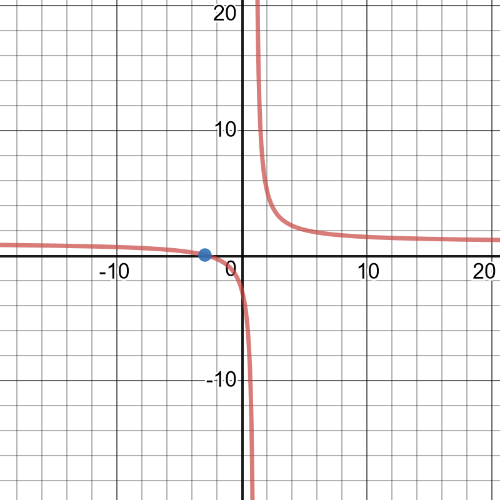
$dfrac{x+3}{x-1}=2 Leftrightarrow dfrac{x+3}{x-1}-2=0 Leftrightarrow dfrac{x+3-2(x-1)}{x-1}=0 Leftrightarrow x+3-2(x-1)=0 Leftrightarrow$
$$
Leftrightarrow x+3-2x+2=0 Leftrightarrow -x+5=0 Leftrightarrow x=5
$$
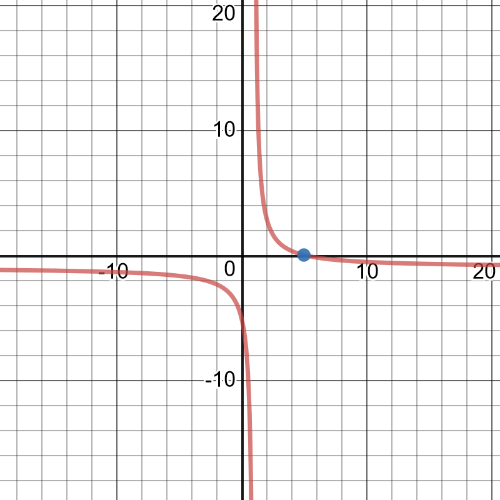
$dfrac{x+3}{x-1}=2x+1 Leftrightarrow dfrac{x+3}{x-1}-(2x+1)=0 Leftrightarrow dfrac{x+3-(2x+1)(x-1)}{x-1}=0 Leftrightarrow$
$Leftrightarrow x+3-(2x+1)(x-1)=0 Leftrightarrow x+3-(2x^2-2x+x-1)=0 Leftrightarrow$
$$
Leftrightarrow -2x^2+2x-4=0 Leftrightarrow x=2, x=-1
$$
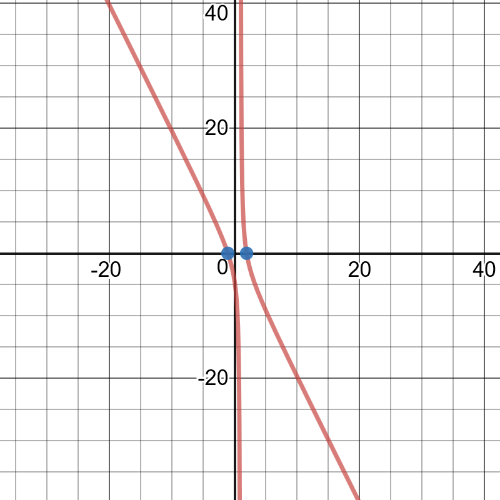
$dfrac{3}{3x+2}=dfrac{6}{5x} Leftrightarrow dfrac{3}{3x+2}-dfrac{6}{5x}=0 Leftrightarrow dfrac{3cdot5x-6(3x+2)}{5x(3x+2)}=0 Leftrightarrow$
$$
Leftrightarrow 15x-6(3x+2)=0 Leftrightarrow 15x-18x-12=0 Leftrightarrow -3x=12 Leftrightarrow x=-4
$$
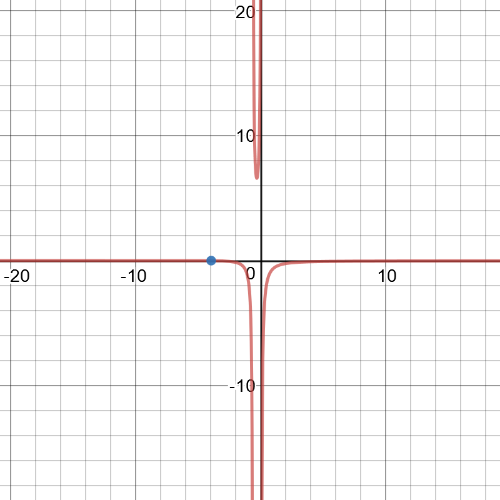
#### (a)
$$
dfrac{x-3}{x+3}-2=0
$$
#### (b)
$$
dfrac{3x-1}{x}-dfrac{5}{2}=0
$$
#### (c)
$$
dfrac{x-1}{x}-dfrac{x+1}{x+3}=0
$$
#### (d)
$$
dfrac{x-2}{x+3}-dfrac{x-4}{x+5}=0
$$
(d) $dfrac{x-2}{x+3}-dfrac{x-4}{x+5}=0$
$dfrac{x-3}{x+3}=2$
$(x+3)cdotdfrac{x-3}{x+3}=2(x+3)$
$x-3=2x+6$
$x=-9$
So, $textbf{the solution}$ of this equation is $x=-9$.
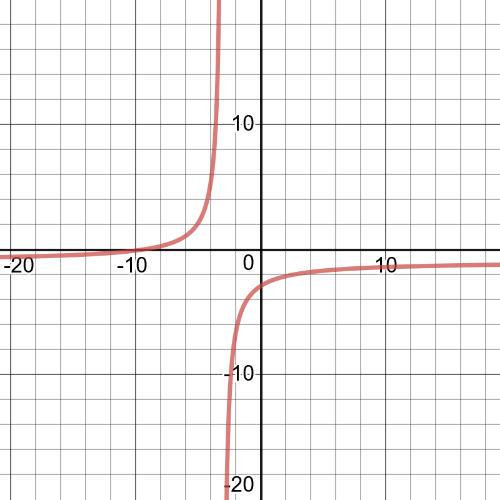
$dfrac{3x-1}{x}=dfrac{5}{2}$
$(3x-1)2=5x$
$6x-2=5x$
$x=2$
So, $textbf{the solution}$ of this equation is $x=2$.
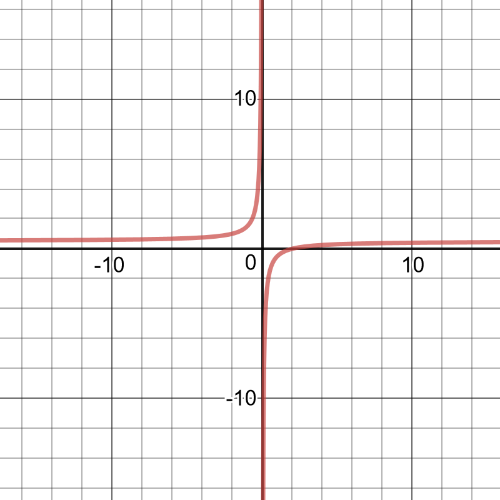
$dfrac{x-1}{x}=dfrac{x+1}{x+3}$
$(x-1)(x+3)=x(x+1)$
$x^2+3x-x-3=x^2+x$
$x=3$
So, $textbf{the solution}$ of this equation is $x=3$.
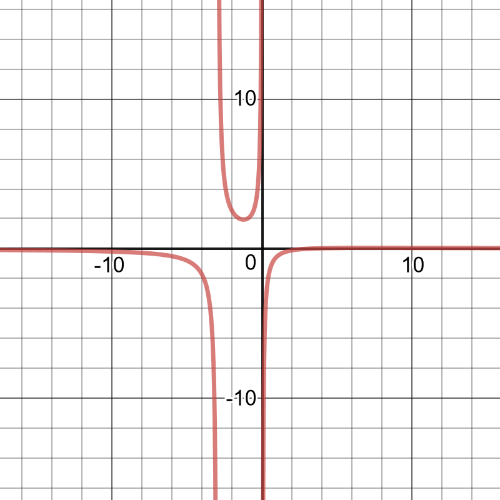
$dfrac{x-2}{x+3}=dfrac{x-4}{x+5}$
$(x-2)(x+5)=(x-4)(x+3)$
$x^2+5x-2x-10=x^2+3x-4x-12$
$4x=-2$
$x=-dfrac{2}{4}=-dfrac{1}{2}$
So, $textbf{the solution}$ of this equation is $x=-dfrac{1}{2}$
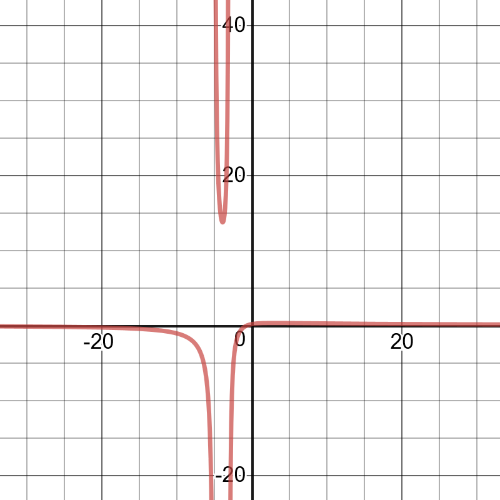
$dfrac{2}{x}+dfrac{5}{3}=dfrac{7}{x}$ /$cdot(3x)$
$3cdot2+5x=7cdot3$
$6+5x=21$
$5x=21-6=15$
$x=dfrac{15}{5}=3$
So, $textbf{the solution}$ of this equation is $x=3$
#### (b)
$dfrac{10}{x+3}+dfrac{10}{3}=6$/$cdot3(x+3)$
$10cdot3+10(x+3)=6cdot3(x+3)$
$30+10x+30=18x+54$
$60+10x=18x+540$
$-8x=-60$
$x=dfrac{6}{8}=dfrac{3}{4}$
So, $textbf{the solution}$ of this equation is $x=dfrac{3}{4}$
#### (c)
$dfrac{2x}{x-3}=1-dfrac{6}{x-3}$/$cdot(x-3)$
$2x=x-3-6$
$x=-9$
So, $textbf{the solution}$ of this equation is $x=-9$
$dfrac{2}{x+1}+dfrac{1}{x+1}=3$/$cdot(x+1)$
$2+1=3(x+1)$
$3=3(x+1)$
$1=x+1$
$x=0$
So, $textbf{the solution}$ of this equation is $x=0$
#### (fe
$dfrac{2}{2x+1}=dfrac{5}{4-x}$ $cdot(2x+1)(4-x)$
$2(4-x)=5(2x+1)$
$8-2x=10x+5$
$-12x=-3$
$x=dfrac{3}{12}=dfrac{1}{4}$
#### (d)
$dfrac{2}{x+1}+dfrac{1}{x+1}=3$/$cdot(x+1)$
$2+1=3(x+1)$
$3=3(x+1)$
$1=x+1$
$x=0$
So, $textbf{the solution}$ of this equation is $x=dfrac{1}{4}$.
#### (f)
$dfrac{5}{x-2}=dfrac{4}{x+3}$ $/cdot(x-2)(x+3)$
$5(x+3)=4(x-2)$
$5x+15=4x-8$
$x=-23$
#### (d)
$dfrac{2}{x+1}+dfrac{1}{x+1}=3$/$cdot(x+1)$
$2+1=3(x+1)$
$3=3(x+1)$
$1=x+1$
$x=0$
So, $textbf{the solution}$ of this equation is $x=-23$.
$dfrac{2x}{x+1}=dfrac{5}{4-x}$ $/cdot(x+1)(4-x)$
$2x(4-x)=5(x+1)$
$8x-2x^2=5x+5$
$2x^2-3x+5=0$
We can cocnclude that this equation $textbf{has no real zeros}$.
#### (b)
$dfrac{3}{x}+dfrac{4}{x+1}=2$ $/cdot{x(x+1)}$
$3(x+1)-4x=2x(x+1)$
$3x+3-4x=2x^2+2x$
$2x^2+3x-3=0$
Solving this quadriatic equation, we get that$textbf{ solutions are }x=-0.5$ and $x=3$.
#### (c)
$dfrac{2x}{5}=dfrac{x^2-5x}{5x}$ $/cdot5x$
$2x^2=x^2-5x$
$x^2+5x=0$
$x(x+5)=0$
Solving this equation we can see that $textbf{solutions are}$ $x=0$ or $x=-5$.
$x+dfrac{x}{x-2}=0$ $/cdot(x-2)$
$x(x-2)+x=0$
$x^2-2x+x=0$
$x^2-x=0$
$x(x-1)=0$
Solving this equation, we can see that $textbf{solutions are}$ $x=0$ or $x=1$.
#### (e)
$dfrac{1}{x+2}+dfrac{24}{x+3}=13$ $/cdot(x+2)(x+3)$
$x+3+24(x+2)=13(x+2)(x+3)$
$x+3+24x+48=13(x^2+3x+2x+6)$
$25x+51=13x^2+65x+78$
$13x^3+40x+27=0$
Solving this equation, we can see that $textbf{solutions are}$ $x=-dfrac{27}{13}$ and $x=-1$.
#### (f)
$-dfrac{2}{x-1}=dfrac{x-8}{x+1}$ $/cdot(x-1)(x+1)$
$-2(x+1)=(x-8)(x-1)$
$-2x-2=x^2-x-8x+8$
$x^2-7x+10=0$
Solving this equation, we can see that $textbf{solutions}$ are $x=5$ and $x=2$.
From the graph we can see that $textbf{solution}$ of this equation is $x=6$
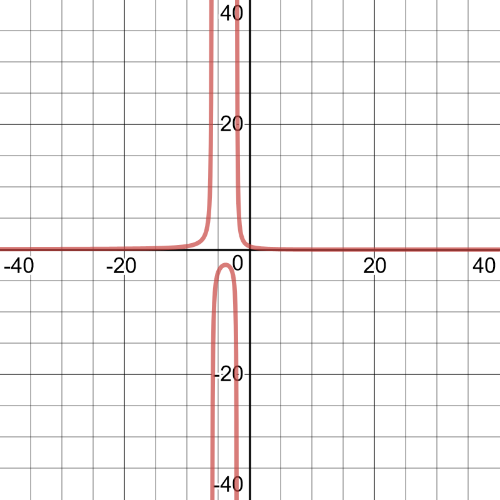
From the graph we can see that $textbf{solutions}$ of this equation are $x= 1.30, 7.70$
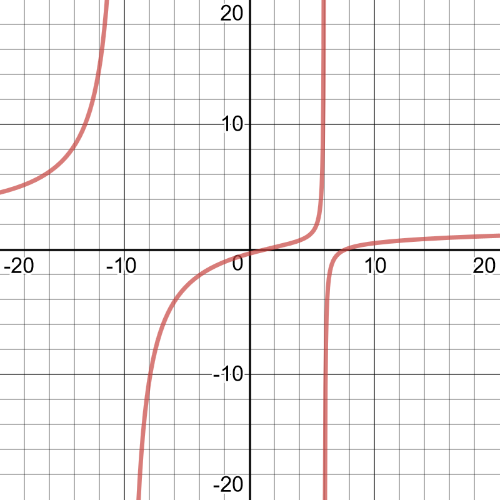
From the graph we can see that $textbf{solution}$ of this equation is $x=10$
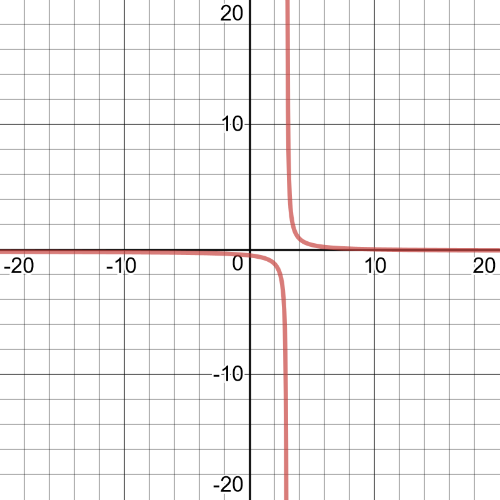
From the graph we can see that $textbf{solutions}$ of this equation are $x= 3.25,20.75$
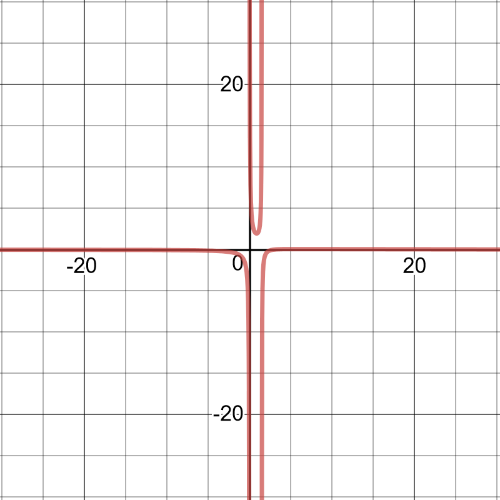
From the graph we can see that $textbf{solutions}$ of this equation are $x=-1.71, 2.71$
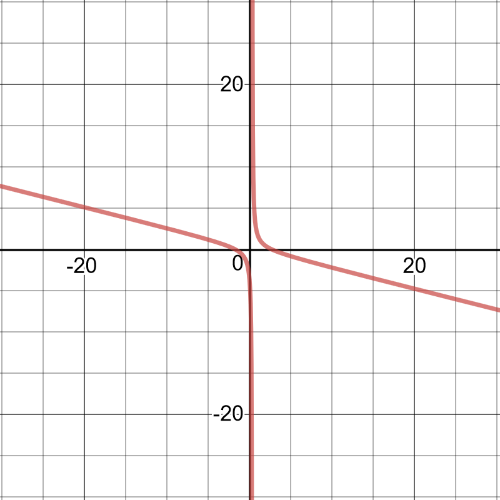
From the graph we can see that $textbf{solutions}$ of this equation are $x= -0.62, 1.62$
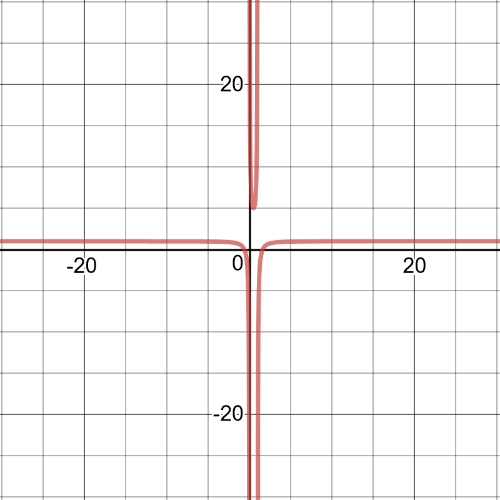
$dfrac{x+1}{x-2}=dfrac{x+3}{x-4}$
Multiply both sides of the equation by the $(x-2)(x-4)$.
$(x-2)(x-4)(dfrac{x+1}{x-2})=(x-2)(x-4)(dfrac{x+3}{x-4})$
$(x-4)(x+1)=(x-2)(x+3)$
Simplify.
$x^2-3x-4=x^2+x=6$
Simplify the equation so that $0$ is on one side of the equation.
$x^2-x^2-3x-x-4+6=x^2-x^2+x-x-6+6$
$-4x+2=0$
$-2(2x-1)=0$
Since the product is equal to $0$ one of the factors must be equal to 0.$textbf{ It must be $2x-1$}$ because $2$ is a constant.
$2x-1=0$
$2x-1+1=0+1$
$2x=1$
$dfrac{2x}{2}=dfrac{1}{2}$
$x=dfrac{1}{2}$
Substitute $x=dfrac{1}{2}$ to verify the solution.
$dfrac{dfrac{1}{2}+1}{dfrac{1}{2}-2}=-1$ and $dfrac{dfrac{1}{2}+3}{dfrac{1}{2}-4}= -1$
Graph the equation $dfrac{(x+1)}{(x-2)}-dfrac{(x+3)}{(x-4)}$ and determine the to verify the solution.
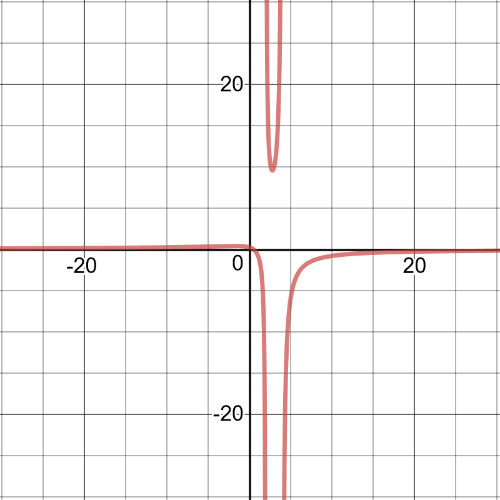
$dfrac{15}{w}=dfrac{w}{15-w}$ $/cdot{w(15-w)}$
$15(15-w)=w^2$
$225-15w=w^2$
$w^2+15w-225=0$
$textbf{Solutions of this quadriatic equation are}$ $w=-15.91$ and $w=0.94$.
Since a width must be positive, we can conclude that $w=0.94$.
Their combine rate is $dfrac{1}{s}+dfrac{1}{s+10}=15$, we will now solve this equation for $s$:
$dfrac{1}{s}+dfrac{1}{s+10}=15$ $/15s(s+10)$
$15(s+10) 15s=s(s+10)$
$15s+150+15s=s^2+10s$
$s^2-20s-150=0$
From this equation we can conclude that $textbf{machine A takes $s=25.8$ and machine B takes $s=35.8$ minutes}$.
resold the box on the Internet then is $dfrac{330}{s-15}$. Tayla made a profit of $1.5 on each comic, which is the sale price per comic minus the original purchase\
price per comic. Solve the equation$$dfrac{330}{s-15}$-$dfrac{300}{s}$=1.50$to find the original number of comics.\$$dfrac{330}{s-15}$-$dfrac{300}{s}$=1.50$\$s(s-15)($dfrac{330}{s-15}$-$dfrac{300}{s}$=1.50)$\$330s-300(s-15)=1.5s(s-15)$\$330s-300s+4500=1.5s^2-22.5s$\$30s+4500=1.5s^2-22.5s$\$30s-30s+4500-4500=1.5s^2-30s-22.5s-4500$\$0=1.5s^2-52.5s-4500$\
The roots are$75.00$and$ -40$. Since you can ‘t have a negative number of comics, the correct answer would be$75$.$textbf{The original price per comic}$
$textbf{would be $dfrac{300}{60}=$ 4 $.}$
{The resale price per comic would be $dfrac{300}{60}=$5.50$.}
$$
\
$$
We will substitute $6$ into the formula for $c(t)$ and solve for $t$.
$6=9-90000dfrac{1}{10000+3t}$
$0=3-dfrac{90000}{10000+3t}$ $/(10000+3t)$
$0=3(10000+3t)-90000$
$30000+9t-90000=0$
$9t-60000=0$
$9t=60000$
$t=dfrac{60000}{9}=6666.67$
$$
textbf{After $t=6666.67$ seconds, the concentration will be $6$ $kg/m^3$.}
$$
#### (b)
On the following picture there is $textbf{a graph}$ of function $c(t)$.We can see that the function appears to approach $0kg/m^3$ as time increases.
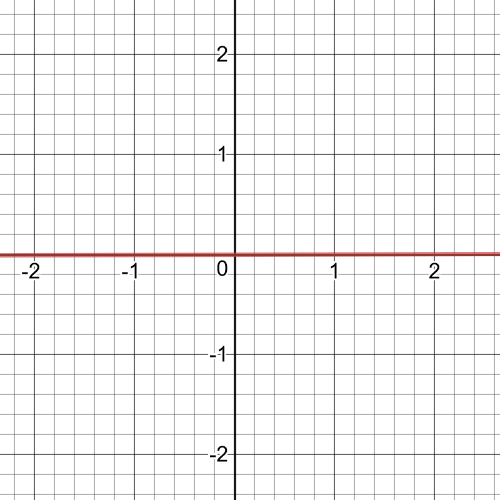
Tom can fill $dfrac{1}{s}$ of an order in $1$ minute.Paco and Carl’s rates are $dfrac{1}{s-2}$ and $dfrac{1}{s+1}$.Working together Tom and Paco can fill an ordee in about $1$ minute and $20$ seconds, or about $1.33$ minutes.
We will solve $dfrac{1}{s-2}+dfrac{1}{s}=dfrac{1}{1.33}$ to find how long it takes each person to fill an order.
$dfrac{1}{s-2}+dfrac{1}{s}=dfrac{1}{1.33}$ $/s(s-2)$
$1.33s+1.33(s-2)=s(s-2)$
$1.33s+1.33s-2.66=s^2-2s$
$s^2-4.33s+2.66=0$
Solving this quadriatic equation, we can see that $textbf{solutions are}$ $s=3.994$ or $s=0.66$.
Because Paco can fill the order in $2$ minutes less than Tom and because we can not have a negative amount of time, $textbf{Tom’s time}$ must be $3.994$.So, $textbf{Paco can fill the order in about}$ $2$ minutes and $textbf{Carl can fill the order in about}$ $5$.
#### (b)
We will add rates together to find how long it would take to them to fill the order working together.
$dfrac{1}{5}+dfrac{1}{4}+dfrac{1}{2}=0.95$
$dfrac{1}{0.95}=1.05$
$textbf{So, working together they can fill the order in about $1.05$ minute}$.
Turn this into an equation that you can graph to find the solutions.
$y=dfrac{x^2-6x+5}{x^2-2x-3}-dfrac{2-3x}{x^2+3x+3}$
Graph the equation.
$$
textbf{The solutions are approximately $x=-3.80, -1.42, 0.90$ and $4.33$.}
$$
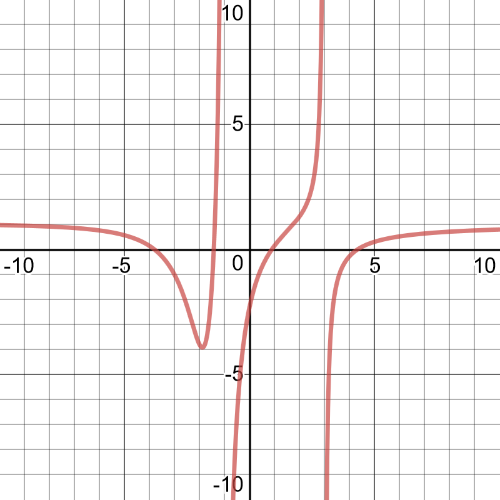
$textbf{The graphs will have the same position when their equation are equal}$. Set the two equations equal to wach other and then solve for $t$. Graph the equation to help you.
$dfrac{7t}{t^2+1}= t+dfrac{5}{t+2}$
$y=t+dfrac{5}{t+2}-dfrac{7t}{t^2+1}$
Graph the equation.
Examine the graph. The zeros are $x=0.438$ and $1.712$
#### (b)
Object A is closer to the origin than object B when
$dfrac{7t}{t^2+1}< t+dfrac{5}{t+2}$ or when
$0< t+dfrac{5}{t+2}-dfrac{7t}{t^2+1}$
Examine the graph and find when the function is positive to solve the inequality. $textbf{The graph shows that the inequality is true on $(0, 0.438)$ and $(1.712, infty)$}$.
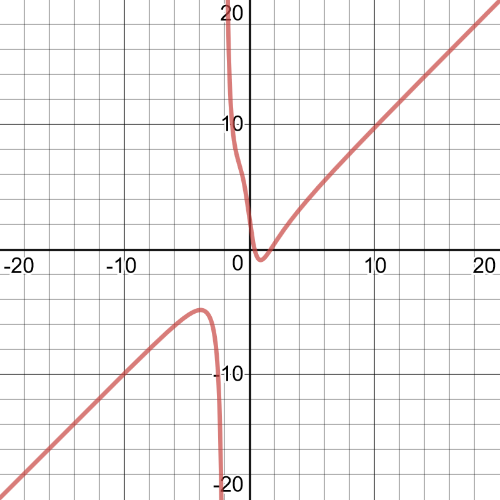
b)$dfrac{7t}{t^2+1}leq t+dfrac{5}{t+2}$ or when
$0leq t+dfrac{5}{t+2}-dfrac{7t}{t^2+1}$

